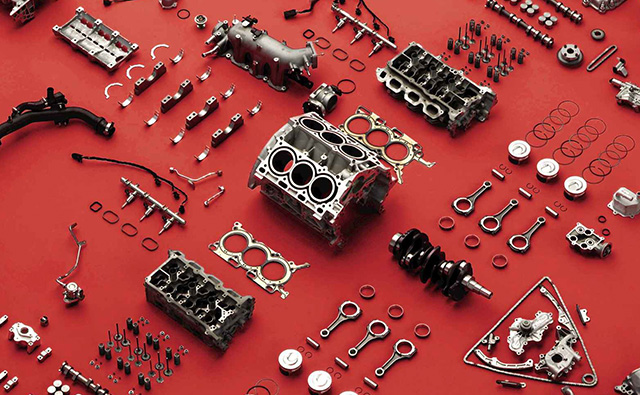The Mission for Ultimate Driving Power: Investigating the Peak of Engine Efficiency and Technological Developments in the Automotive Industry
In the world of automobile design, the search of optimum driving power has actually been a ruthless pursuit that has actually unfolded via the evolution of engine layout and the combination of advanced modern technologies. From the precise workmanship of burning engines to the fast improvements in electric propulsion systems, the automobile sector stands at the cusp of a brand-new period characterized by extraordinary performance capabilities. As designers and scientists dig much deeper right into the realms of computational fluid dynamics and explore innovative gas modern technologies, the perspective of possibilities broadens greatly. Remain tuned as we untangle the complex tapestry of technical innovations that are shaping the future of auto power and performance.
Evolution of Engine Style

Furthermore, the integration of turbocharging and supercharging innovations has actually changed engine style by boosting power without substantially raising engine dimension. These forced induction systems compress the intake air, enabling more gas to be combusted, therefore producing greater power result from a smaller engine. This improvement has been specifically vital in improving the performance of smaller sized variation engines while preserving gas effectiveness requirements.

Performance-Enhancing Fuel Technologies
The execution of advanced gas innovations has actually significantly added to boosting engine performance in contemporary cars. Biofuels, acquired from sustainable sources like sugarcane, algae, or corn, offer enhanced and lowered discharges engine effectiveness. In addition, fuel ingredients and detergents are being created to tidy engine elements, maximize burning, and decrease friction, consequently enhancing general car efficiency.
Advancements in Electric Propulsion
Significant strides in electrical propulsion innovation have transformed the automobile sector, leading the way for a new age of reliable and sustainable transport. Electric cars (EVs) are getting popularity due to their environmental benefits and improvements in battery modern technology, making it possible for longer driving arrays and much shorter charging times. Producers are investing greatly in study and development to boost the performance of electric propulsion systems, concentrating on enhancing power result, boosting power effectiveness, and reducing general weight.
One noteworthy advancement in electric propulsion is the growth of innovative electric motors that deliver greater torque and power density, causing enhanced acceleration and general driving performance. Additionally, regenerative braking systems have actually been fine-tuned to save read the article and capture power throughout slowdown, further enhancing the efficiency of EVs.
In addition, the combination of clever modern technologies, such as expert system and anticipating analytics, is maximizing the monitoring of electric propulsion systems, ensuring optimal performance under numerous driving conditions. These improvements in electric propulsion are improving the auto landscape, driving the sector towards an extra lasting and electrified future.
Influence of Computational Liquid Dynamics
With developments in electric propulsion pressing the borders of auto technology, the combination of Computational Fluid Characteristics is playing an essential function in optimizing aerodynamic performance and enhancing general effectiveness in automobile layout. Computational Fluid Dynamics (CFD) includes using computer system simulations to examine the flow of air around a lorry, enabling engineers to anticipate exactly how layout adjustments will affect aerodynamics without the demand for costly physical prototypes. By accurately modeling airflow patterns, CFD enables the improvement of vehicle forms to lower drag, enhance cooling, and enhance stability.
One key benefit of utilizing CFD in lorry style is the capability to repeat rapidly, checking out many layout variants to identify the most aerodynamically effective remedies. This iterative procedure leads to vehicles that are not just sleeker and more visually appealing yet also extra environmentally pleasant and fuel-efficient. CFD makes it possible for engineers to optimize air movement around elements such as radiators, engine bays, and wheel wells, contributing to improved efficiency and overall driving experience. To conclude, the assimilation of Computational Fluid Dynamics stands for a substantial progression in the mission for ultimate driving power and effectiveness in the automotive industry.
Future Trends in Engine Technology
In the dynamic landscape of auto engineering, cutting-edge developments are forming the future trajectory of engine advancement. The future of engine layout is marked by a solid emphasis on performance, sustainability, page and efficiency. Suppliers are progressively focusing on developing engines that not just supply high power results yet additionally focus on ecological duty by improving and minimizing exhausts fuel performance.
One prominent pattern in engine technology is the rise of electrification. Hybrid and electric powertrains are acquiring traction as sensible options to traditional burning engines. These technologies use the possibility for significant decreases in carbon exhausts and raised energy efficiency, straightening with international efforts to deal with climate modification.
Additionally, advancements Website in products science and manufacturing techniques are allowing the production of lighter and much more long lasting engine components. This shift towards light-weight products such as carbon fiber and light weight aluminum alloys adds to boosted efficiency and fuel economy.
Verdict
In conclusion, the pursuit of supreme driving power in the automobile industry remains to drive innovations in engine layout, gas modern technologies, electrical propulsion, and computational liquid characteristics. The advancement of these modern technologies is forming the future of engine technology, paving the means for more effective and effective cars (engines for africa). As the industry remains to press the borders of what is feasible, we can anticipate to see much more innovative developments in the quest for peak efficiency
One of the crucial landmarks in engine style development is the transition from conventional carbureted engines to contemporary fuel-injected systems. By exactly metering the fuel delivery to each cyndrical tube, fuel-injected engines enhance combustion, resulting in better efficiency and minimized environmental influence.
Furthermore, the assimilation of turbocharging and supercharging technologies has actually reinvented engine design by boosting power without significantly increasing engine dimension (engines for africa).The implementation of innovative fuel technologies has actually substantially contributed to boosting engine performance in modern-day automobiles. Additionally, gas additives and cleaning agents are being developed to clean engine elements, optimize burning, and decrease rubbing, thereby enhancing overall lorry performance